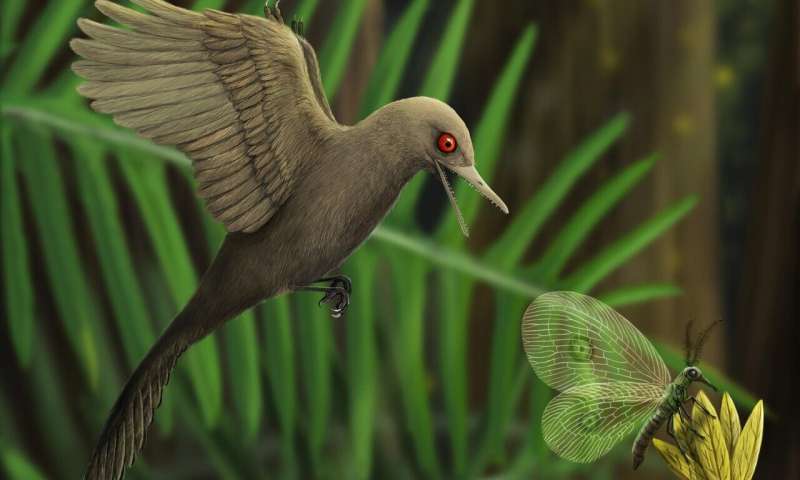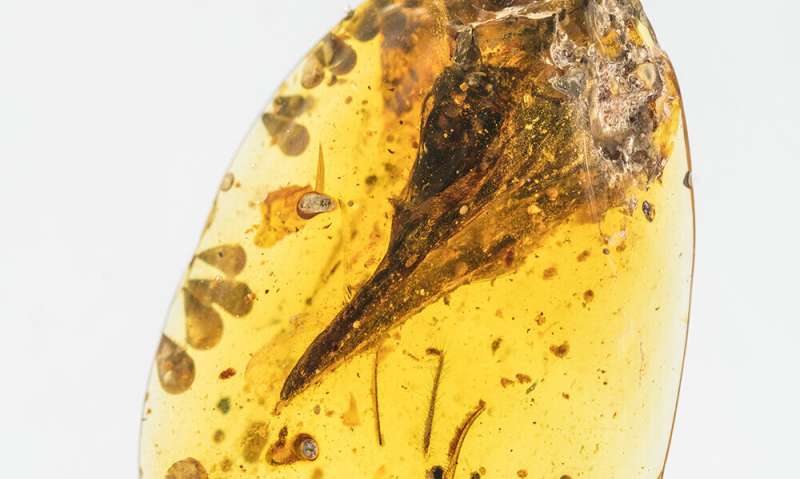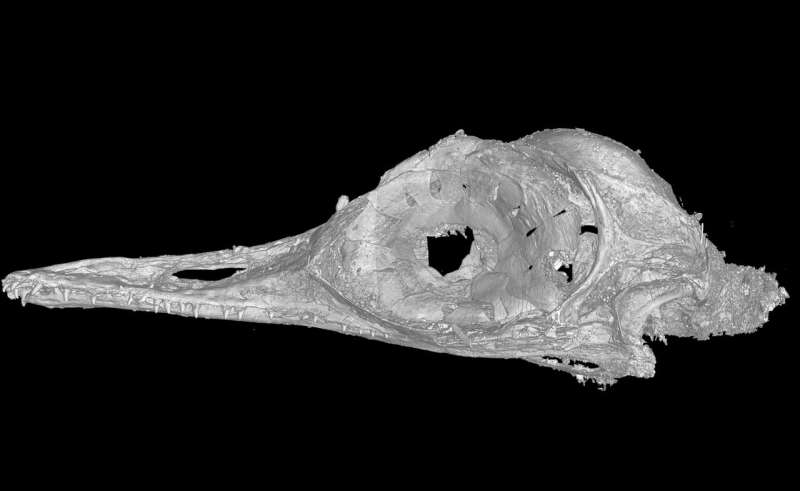An artistic rendering of Oculudentavis imagining what it looked like preying on an insect by HAN Zhixin.
The discovery of a small, bird-like skull, described in an article published in Nature, reveals a new species, Oculudentavis khaungraae, that could represent the smallest known Mesozoic dinosaur in the fossil record.
While working on fossils from in northern Myanmar, Lars Schmitz, associate professor of biology at the W.M. Keck Science Department, and a team of international researchers discovered a seemingly mature skull specimen preserved in Burmese amber. The specimen's size is on par with that of the bee hummingbird, the smallest living bird.
"Amber preservation of vertebrates is rare, and this provides us a window into the world of dinosaurs at the lowest end of the body-size spectrum," Schmitz said. "Its unique anatomical features point to one of the smallest and most ancient birds ever found."
The team studied the specimen's distinct features with high-resolution synchrotron scans to determine how the skull of the Oculudentavis khaungraae differs from those of other bird-like dinosaur specimens of the era. They found that the shape and size of the eye bones suggested a diurnal lifestyle, but also revealed surprising similarities to the eyes of modern lizards. The skull also shows a unique pattern of fusion between different bone elements, as well as the presence of teeth. The researchers concluded that the specimen's tiny size and unusual form suggests a never-before-seen combination of features.
The discovery represents a specimen previously missing from the fossil record and provides new implications for understanding the evolution of birds, demonstrating the extreme miniaturization of avian body sizes early in the evolutionary process. The specimen's preservation also highlights amber deposits' potential to reveal the lowest limits of vertebrate body size.
-
A seemingly mature skull specimen preserved in Burmese amber reveals a new species, Oculudentavis khaungraae, that could represent the smallest known Mesozoic dinosaur in the fossil record. Credit: Xing Lida
-
A CT scan of the skull of Oculudentavis by LI Gang, Oculudentavis means eye-tooth-bird, so named for its distinctive features. Credit: Lars Schmitz
"No other group of living birds features species with similarly small crania in adults," Schmitz said. "This discovery shows us that we have only a small glimpse of what tiny vertebrates looked like in the age of the dinosaurs."
More information: Hummingbird-sized dinosaur from the Cretaceous period of Myanmar, Nature (2020). DOI: 10.1038/s41586-020-2068-4 , nature.com/articles/s41586-020-2068-4
Update: This article was retracted on 22 July 2020
Journal information: Nature
Provided by Scripps College


























